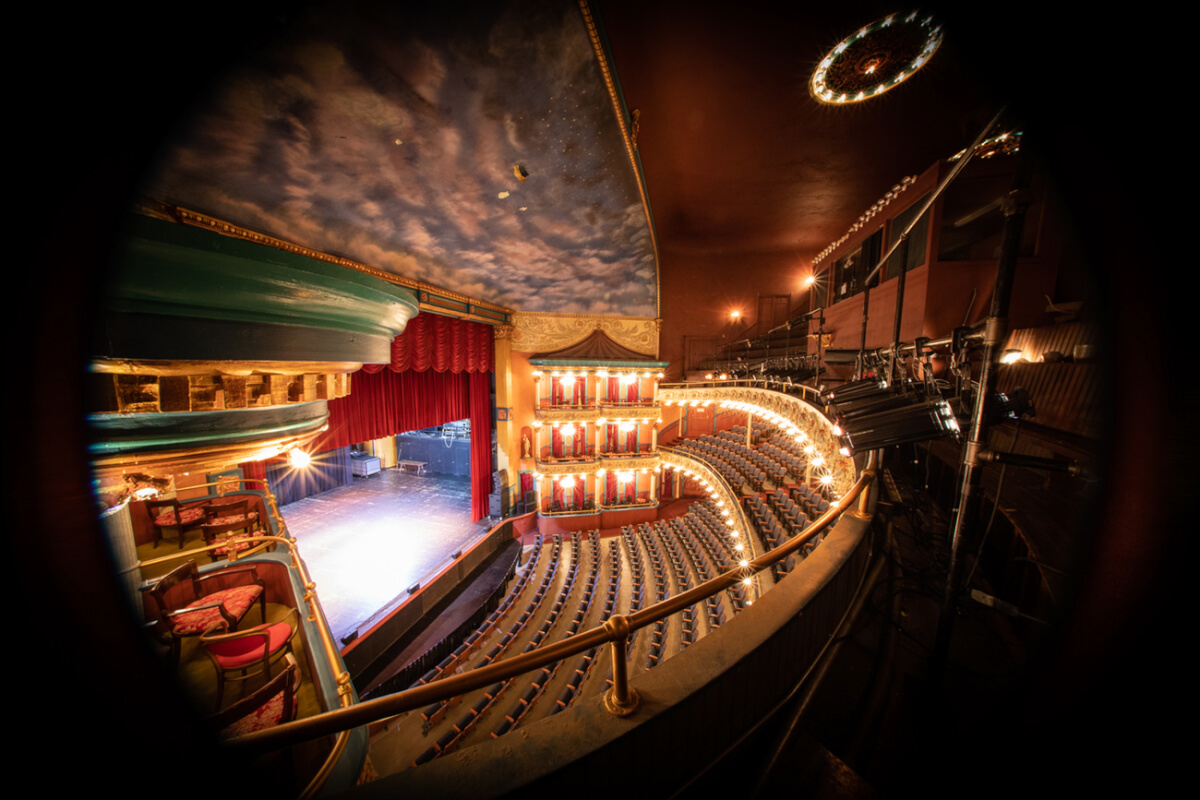
Grand Tales
From the undocumented to the otherworldly, we explore some of the rumors surrounding the Grand Opera House
By Michael W. Pannell
Photography by Christopher Smith
Have you ever sensed a ghost at The Grand Opera House? Ever heard that real horses once raced across the stage there? Many tall tales abound regarding the Grand and other local historic venues, and while we may not settle every rumor or cover every tale, it’s fun to try – or at least get the official word on some of the more prominent ones with a few historical tidbits thrown in.
In a series of articles, we first we consider the Grand Opera House and start with what may be its most controversial story of all: Did Houdini really cut a trap door in the stage?
Stage stories
Sorry to disappoint, but there’s no definitive answer. There are good stories, enough that most volunteer guides at the theater will point stage right and say, “That’s Houdini’s trap door.”
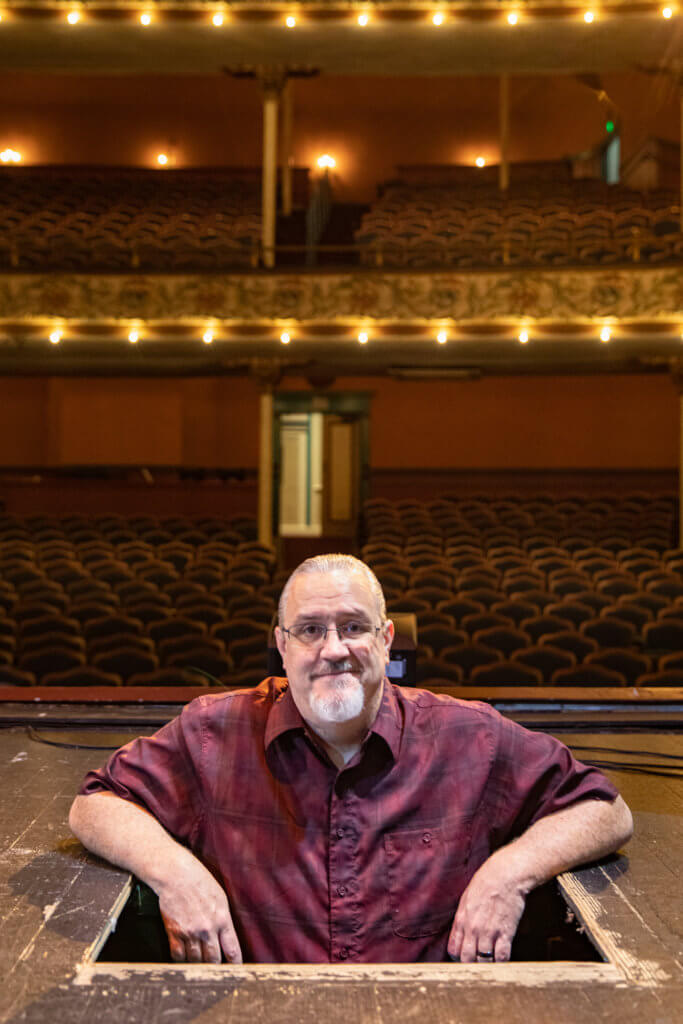
Bob Mavity has a lot to say on the matter and all things Grand Opera House. He’s the theater’s senior technical director and has been climbing around its nooks and crannies for 26 years. He’s the on-site, go-to guy for history both solid and fuzzy.
His personal leaning on the Houdini issue?
“People have tried looking up facts but there’s nothing to absolutely prove Houdini cut trap doors in our stage, and that’s just the way it is,” he said. “Once a story is told it gets perpetuated and maybe that’s all there is to this, but personally, I believe there is something to it. I was told from the start we had three functional trap doors – one stage right, one stage left and another center stage. I was told they were placed there by an illusionist assumed to be Houdini.
“I do know this for sure: When we replaced the stage floor for the first time since it was built in 1905, when we pulled up the flooring about 20 years ago due to deterioration, we found evidence of not one, not three, but of 26 more traps with their leavers and workings. They’d been boarded up under the stage and were all the same size, matched, and to my mind, were all for the same person.
“I don’t know what other illusionist was famous enough for the Grand’s management to do all that for. I don’t believe it’d be for just any magician passing through. Houdini’s carpenters were known to come to town in advance under secrecy of night and install all the traps he needed. … My opinion, it was for the man himself. Do we have paperwork? No. But none disproving it, either. I’d love to see it if there was.”
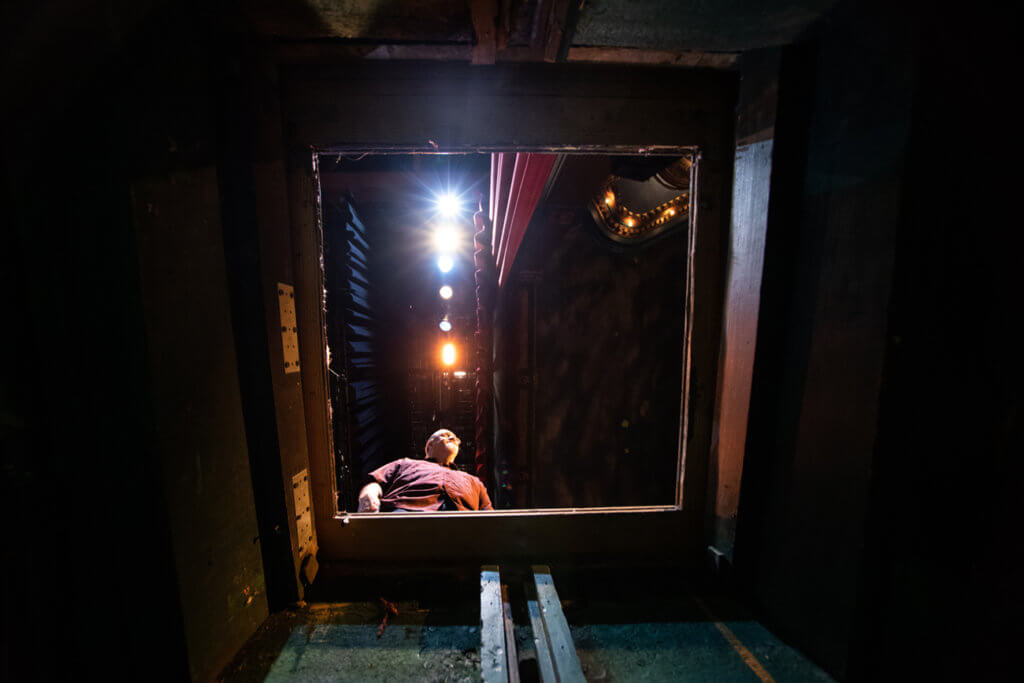
Another stage story is magnificently true and involves the great traveling stage production of “Ben Hur” at the turn of the last century, which featured real horses on a real racetrack pulling real chariots right onstage to thrill audiences.
The Grand’s written history and Mavity confirm not only a flat conveyer-belt racetrack but that it was built right into the stage. Even more, the show was booked as the Grand was being built and “Ben Hur” technical staff were sent to oversee stage construction and assure all was in order for the spectacular scene.
In addition to horses, the stage has seen its fair share of notable humans through the years. A lineup of historical acts at the Grand includes John Phillip Sousa, Sarah Bernhardt, Charlie Chaplin, Lionel Barrymore, Will Rogers, Ethel Barrymore, George Burns and Gracie Allen, the Allman Brothers Band, Bob Hope and Ray Charles.
Foundation formation
There’s been debate about the Grand’s foundation. Was it built on the same foundation as its preceding incarnation, the Academy of Music? The Academy was built in 1884, but by 1902 it and its classic rose window were obsolete. Plans were made for a new Macon cultural venue: the Grand Opera House. Some say the Grand was built on the basic foundation of the Academy, literally, and some say a façade was added to the old structure.
Of course, others say no way.
Joe Patti, executive director at the Grand, offers proof the Grand was entirely a rebuild, not a re–do.
“It’s not the same foundation at all,” Patti said. “We can tell from records, drawings, photographs, diagrams and insurance maps the Academy was about a third the size of the Grand and we can’t even say there is a shared pre-existing wall, though we would love it if there was.”
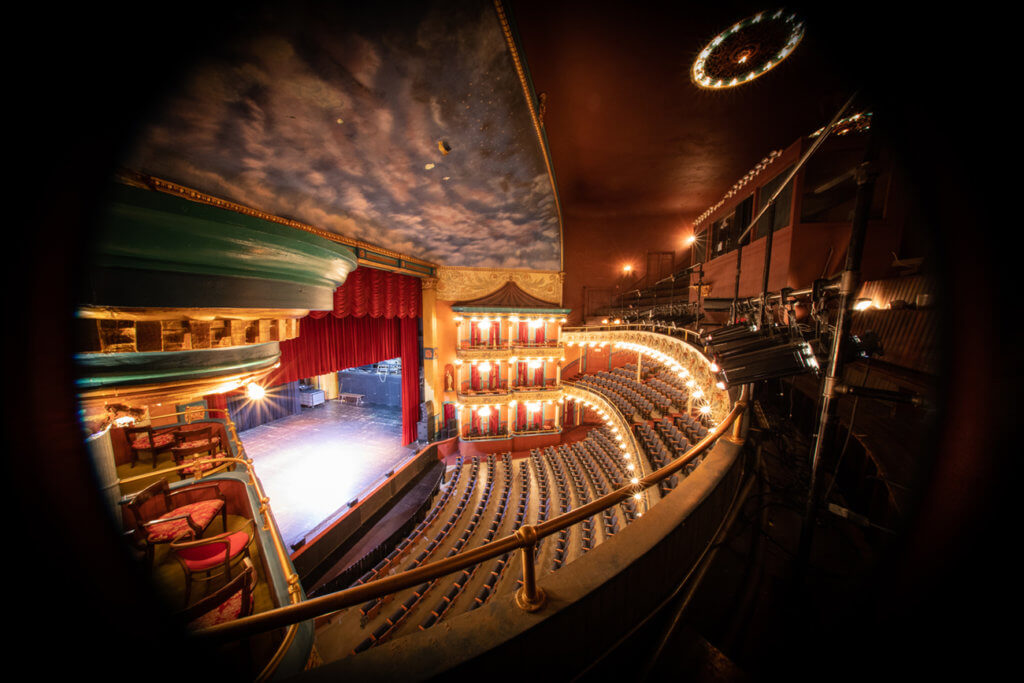
Patti noted using the old foundation for the new Grand would have been anathema to its architect, W.R. Gunn. Gunn built theaters across the U.S. to his own extremely high standards and offered a $1,000 guarantee as to each audience member’s line of sight to the stage and perfection of house acoustics, “when the entire control of the auditorium and stage is under my supervision.”
Wrecking ball at the ready
Other well-worn Grand stories involve its salvation. Like this: Was there a wrecking ball literally parked out front in the 1960s ready to knock it down?
Seems so.
In 1965, other properties on Mulberry Street already were being leveled. The Grand was crumbling, and soon after showing “The Sound of Music” it was marked unfit for occupants. It looked like it was going to become a parking lot.
“But thanks to community members, notably Val Sheridan, it’s still here,” Patti said. “They saved it; they upgraded it. The Macon Arts Council (now Macon Arts Alliance) and Macon Civic Club can both be credited. There were a lot who got on board and saved Macon’s Grand Opera House. I don’t know exactly who moved the wrecking ball, though.”
Patti said those organizations and the community have remained behind the Grand with support and revamps. He said with the theater now taken over by Mercer University, which has led the way toward dramatic expansion and remodeling, the theater’s future looks good.
How about ghosts?
On the ghostly – and tragic – side of the Grand’s history, two ghost stories are common. Sadly, there’s one death on record presumed to be a suicide, according to Mavity.
First, there are tales of “the lady in white,” with sightings not so prevalent in recent history. Some, including fire marshals, report hearing a soprano singing then seeing a woman who would quickly disappear. Reports are that many a fire marshal refused to do inspections alone at the theater.
More recently, there’s the unfortunate account of Randall Widner and subsequent ghostly happenings, which Mavity said he’s often experienced himself.
“Randall was the executive director here into the early 1970s, and truly loved the place,” Mavity said. “He oversaw a major restoration here but unfortunately, as I understand it, experienced personal and family problems. As fate would have it, in 1971 he ended up climbing to a space high atop the theater called the thunder room – a place where thunder sound effects and such were done – with a bottle of sleeping pills, whiskey and a pistol. He supposedly had taken pills and drunk whiskey, sat down and never got back up. Public record says he had the pistol to shoot pigeons.
“He loved and was very committed to the Grand and ever since then there have been non-stop reports of things that just can’t be explained. Many, including me, attributed them to Randall. I feel he’s here still loving and watching over the place – never in a menacing way.”
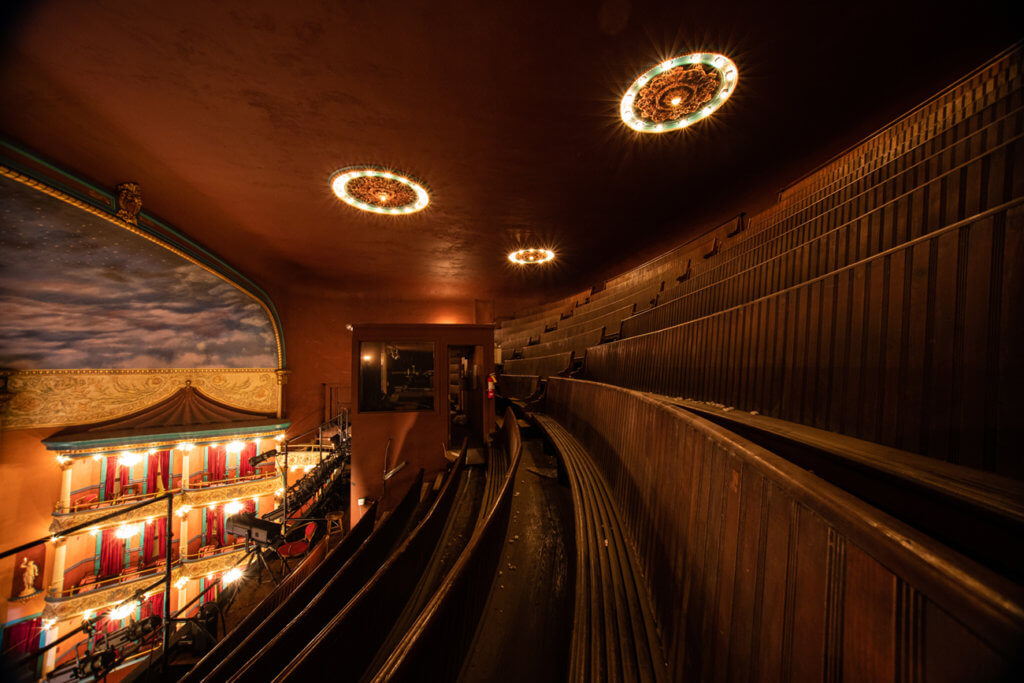
What sort of things do Mavity and others experience?
People at the balcony spotlight have felt someone blowing on the backs of their necks. People have felt someone breezing by when no one was. There are seats that flip closed regularly by themselves. Music, hard to pinpoint, plays in the theater with no apparent source. Then there are the lights.
“I’m regularly the one who shuts everything down and closes up,” he said. “I can’t tell you how many times I’ve turned off lights somewhere only to see they’re back on when I’m all done. And then it might happen again. There have been nights this has happened and I’ve said, ‘Randall, I’m tired, I just want to go home,’ and that would be the end of it.
Mavity said it happens in the basement, on stage, in the balconies, all throughout the theater.
He also said during the Grand’s most recent round of major renovations he had to stay overnight many times for reasons such as keeping an eye on welding hot spots, making sure they didn’t flare up. He, like others, heard source–less music rising in the theater.
What does Mavity believe Widner thinks of all the recent improvements?
“Good question,” he said. “These goings-on have always been benign and never malicious but it seems we haven’t had as much activity lately, just a few happenings. Whatever people think about it, my impression is Randall is a protective spirit who loves the theater and is watching over it. The impression I get from others who’ve experienced things is the same.”
Heard any rumors regarding the history of the Douglass Theatre or Hargray Capitol Theatre? We’ll explore those locations in futures stories. Send us an email at hello@maconmagazine.com.







